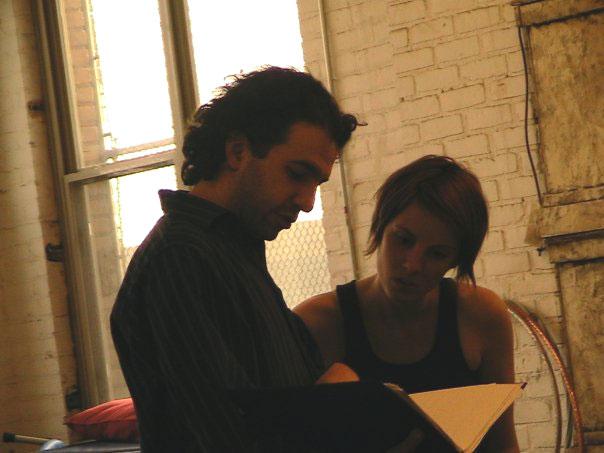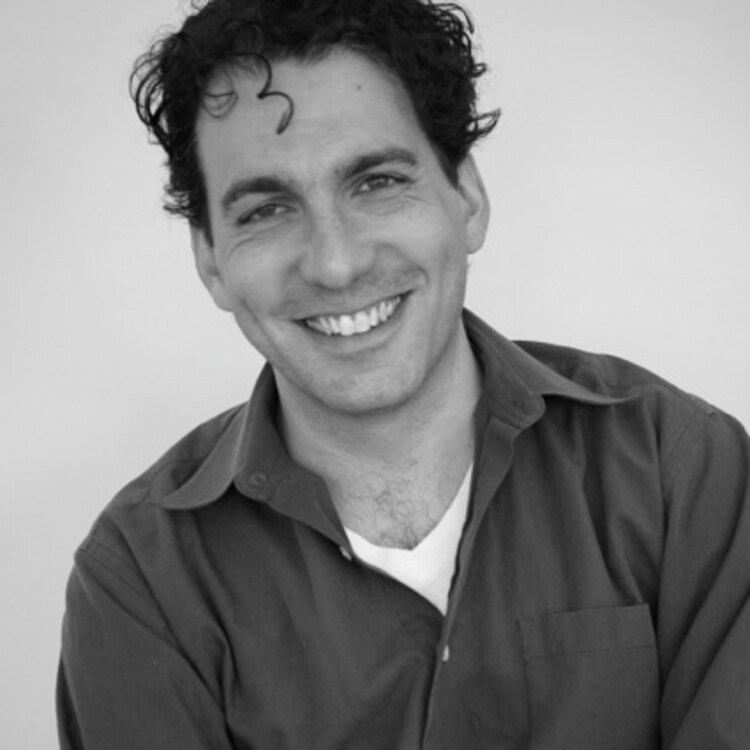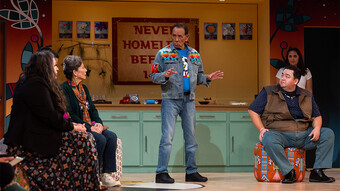A Relaunch for MinnesotaPlaylist
Around nine years ago, I found myself sitting next to the executive editor of the Minneapolis Star Tribune in a gigantic conference room where almost every artistic director in Twin Cities theatre had gathered to raise their voices together in protest against the newspaper’s performing arts coverage at the time.
The Strib, Minnesota’s largest daily newspaper, had recently redesigned itself in one of those increasingly frequent and desperate early millennia attempts by the mainstream media to rearrange the deck chairs on the Titanic before the iceberg of the internet took them down. The local artistic directors, gathered here, had decided that the theatre community’s seats had been placed too far away from the shuffleboard courts, and someone thought that a show of strength would make a difference.
The meeting lasted less than an hour and was, to be generous, unproductive.
Nonetheless, in the midst of this chilly, useless, and mutually unyielding conversation, a few of the artists present suggested some ideas for content created collaboratively with the newspaper that they thought would help everyone—critical conversations about the work between artists, behind the scenes videos, explanations of their process, invitations to early brainstorming sessions.
No one, said the editor, wants to read about your process.
Except me. I did. I was sitting with artists whose work I admired greatly, and I absolutely wanted to know how they made it; where their ideas came from; and what else they had to say on the subjects that interested them.

Most of us may not remember this era a decade ago because websites like HowlRound and others have done such a good job of promoting conversation about art from inside the community. But, at the time, asking artists to “cover” their own work (outside the occasional interview) was laughable or even blasphemous. Maybe there were a few artist bloggers at the time, but they were doing themselves a disservice was the conventional wisdom—the more generous conventional wisdom. The less generous assessments were that they were artists who couldn’t get jobs so had found an undignified outlet to complain. It may be hard to imagine now but the basic assumption—one that had been carved in stone somewhere back before I can remember—was that artists were unable to be articulate about their work. Artists were flighty and, frankly, artsy, and, in order to be appreciated, Art needed to be interpreted for the audience by someone other than the artist—like a critic or an academic or at least your neighbor.
So, a few years later, in 2008, my partner Leah Cooper and I, with invaluable help from graphic designer and artist Matthew Foster, launched MinnesotaPlaylist.com, a website for the performing arts in Minnesota dedicated to the idea that, basically, art was interesting to discuss rather than simply review; that process was essential to understanding product; and that Minnesota performing artists were smart enough to speak for themselves. In a sense, artists are as much reporters about America as journalists. Why not give them a platform?
Six years later, we’ve published more than 800 articles from almost 200 mostly local/mostly artist writers—hired four different part time editors to maintain the site (as our own artistic careers have ebbed and flowed) and tried to pay most of our writers at least a small stipend. We started in 2008 with 200 visits a day and now receive between 2,000 and 1,300 each weekday from 12,000–15,000 unique visitors a month.
Now, it’s time for a relaunch. MinnesotaPlaylist wants to expand coverage of the local performing arts scene with more reviews, investigative features, and data about local performing artists and shows, and we want to add more cool functionality to the website. To get it all done, we are crowdsourcing an Indiegogo funding campaign.
What do artists do when given a platform? On the simplest level, artists like Minnesota playwright Allison Moore reported back from places like the Humana Festival, actor and educator Chris Carlson explained the craft of improvisation for the uninitiated, actor Delta Rae Giordano covered the experience of being an actor in unconventional settings, or Rhiana Yazzie explained in detail First Nations Theater. We also published some thoughtful and well-written critical analysis like this by playwright Dominic Orlando or this from the late, great playwright Tom Poole. We were able to illuminate parts of the process that are often hidden behind the scenes like costume design and light design and rehearsals as well as give some straightforward how-to advice (here and here). This video interview with Juene Lune co-founder Dominique Serrand still gets monthly visits. Plus we let the critics speak for themselves. And much more.
My favorite MinnesotaPlaylist moment over the last six years is this one: Sitting in a bar next door to a theatre, waiting for an actor after a show, I overheard one performing artist say to a table of five other artists “Hey, did you read that thing on MinnesotaPlaylist today?” and watched the conversation turn to him.
If you live in an area that has the kind of theatre coverage you wish for your field, good for you. If you are interested in starting a conversation about the performing arts where you live or deepening the conversation with insights from local artists, here are a few lessons we learned along the way–
But first I have to acknowledge that we had one really big advantage:
We live in Minnesota, and Minnesota is a special place.
In Minnesota, your bank teller, plumber, and doctor all have opinions about whether they like the Guthrie Theater’s season.
Let me elaborate: Not long before we launched MinnesotaPlaylist, Leah and I (we are married) actually sold our house in Minneapolis and everything in it and drove a Subaru down to Central America and didn’t turn around until we hit Honduras. So, on the way back, we asked, well, where do we really want to live? I was originally from Chicago with stops in New York, Boston, Phoenix, and San Francisco. Leah was from Los Angeles. We could go anywhere.
In Minnesota, your bank teller, plumber, and doctor all have opinions about whether they like the Guthrie Theater’s season. All of them may have seen your last Fringe show or that other thing you did that you thought only fifty people saw. It’s no big deal; they’re not impressed by you; they just enjoy their cultural heritage; they appreciate that you do what you do and they will go see it (if they know about it)—because this is what they do in their life, along with lots of gardening, voting at the highest rates in the country, and bemoaning the Vikings and Twins. In 2008, Minnesotans voted to raise sales taxes in order to fund “Legacy” preservation including, among other things, the Arts—which now receives from this fund an additional $60 million a year. A year.
Also in Minnesota, you can get almost all of the prominent artistic directors and theatre leaders in the same room together simply by asking them. And any young artist can call them up and ask for a meeting or meet them at an event. For the most part, people are friendly and accessible regardless of where you perceive them on the hierarchy. (They may not do what you want them to do, but they will treat you as an equal.)
Actors can afford houses here. Playwrights find ways to produce their own work, no matter how outrageous—and other great artists will come along for the ride, for very little money oftentimes. And audiences are happy you’re here. If you’re the type of person who just wants to do work in front of an audience and forego the hype, Minnesota works.
With all other options available to us—New York, Chicago, Los Angeles. Or San Diego, San Francisco, Miami. For that matter, Albuquerque has nice people and weather—Leah and I drove back to Minnesota. The uniquely connected and supportive community pulled us back.
(Don’t get the wrong idea. Don’t move here. It is cold around six months of the year. Also, sometimes, an aversion to buzz and hype can be an avoidance of passion and being challenged.)
With those caveats, here’s what we have learned so far:
- The audition notices and job postings provide the essential reason why people come to the website. They need to visit our website if they want a career in the performing arts in the Twin Cities. So, as we rebuild, we keep asking: What else do people need? Our answer (in part): an amazing calendar and a comprehensive talent database.
- People return to the website because the writing on it creates a sense of community. We cannot maintain an audience with only pragmatism (classified ads) or only passion (articles). We need both. Thankfully, theatre people are highly literate. After all, one hundred percent of us have read at least a little Shakespeare. We discovered early the value of the long read—even as everyone else insisted that internet reading was all about quick bites. To this day, most of our popular articles are 1,000 words or more. Sometimes much more. So, as we rebuild, we know our audience wants the investigative pieces more than the clickbait.
- Consistent quality is hard to produce over the years. Forgive your local daily newspaper writer. As in theatre, perfection is impossible. Also, unfortunately, the audience does not necessarily reward us (financially or otherwise) for the marginal difference between good enough and great. They are too busy. We strive for great for our own reasons.
- If you want to make money, leave theatre. However, even the attempt to make enough money to justify our labor hours requires a focus on business practices that sometimes seems unfair to freelance artists who were just trying to make a goofy idea reality. We never incorporated as a not-for-profit even though we never expected to make a profit (theatre!) because we did not want to take any grant money from the people who make the art. Thanks to revenue from the audition classifieds and talent profiles, though, we’ve been able to increase the total amount of payments we make to writers and editors. Still, the concept of sustainability requires that we charge for services we wish we could offer for free.
- On the other hand, not having a nonprofit board of directors is an awesome lot of fun. Without a gang of random people who require us to intellectually or theoretically justify an idea before we can implement it, almost anything we do feels more vivid and fun. Because whatever happens, it was truly our intention all along. And we get to move so much faster. Without them, however, we have may have less buffer between what our community wants than we would with a panel of “community representatives” inside our organization. There is no bureaucratic “process” in place to “evaluate” a program—i.e., rationalize why it continues to exist. When something isn’t working, no matter how much we’ve invested in it, we have to be willing to change quickly. (Ask me about my theatre “box scores” plan.)
- We can’t re-energize the audience for arts writing without re-envisioning arts writing itself. Though we have a core group of literate, committed readers, the least read articles are generally the ones we commission from conventional non-artist journalists. Artist writers naturally find ways to communicate their ideas to readers without being bound by convention. When we discovered that artists could review each other’s work with passion, from new perspectives (and without being blackballed by other artists), we decided to expand our criticism section on the new website.
- We have Google Analytics enabled on our site, we get regular feedback from a variety of community members, and we are self-critical— yet it is still hard to know what exactly people are thinking, what makes an impression on them, and what people appreciate. As with the arts themselves, when you’re trying to communicate with people in a way that they value more deeply than gossip, you don’t always get to know what made a real impact on them. After a certain point, after the excitement of an initial idea wears off, you either do what you do for money, or you do it for other people, for other rewards.
So six years on from an idea that was much harder to implement than we thought but also inspired more support than we envisioned, Leah and I (with help from Matthew Foster again but also with a professional computer programmer and a roster of great writers/artists) have decided to make MinnesotaPlaylist.com into an even bigger website.
We think that Minnesota artists are making amazing work. We want more people to know it. And now we can prove, from six years of experience, that performing artists have something worth saying, both on stage and off.













Comments
The article is just the start of the conversation—we want to know what you think about this subject, too! HowlRound is a space for knowledge-sharing, and we welcome spirited, thoughtful, and on-topic dialogue. Find our full comments policy here